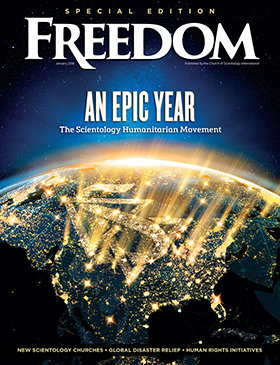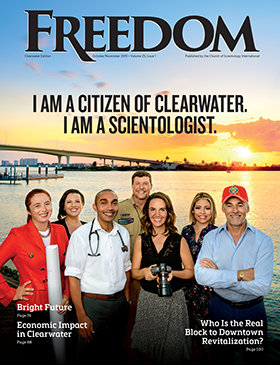Molly is a woman who could be a mother, a sister or a daughter, but the drug called Molly is a femme fatale that kills indiscriminately. The drug is never prescribed, and the chemicals it contains alter the minds of users, often fatally.
Beginning with the synthesis of mescaline in 1897 in the laboratories at Leipzig University under the auspices of the father of modern psychology, Wilhelm Wundt, synthetic drugs were created and exported by mainstream “scientists” and psychiatrists with the help of the pharmaceutical industry.
Ecstasy—also known as Molly—was the first modern designer drug, hitting the streets in the early 1980s. Synthetic drugs, also called designer drugs, have since multiplied, and users across the country now feel their adverse effects.
Molly is the drug of choice at raves—all-night dance parties—that bring in billions of dollars a year to festival producers around the world. Popular artists such as Miley Cyrus, Kanye West and Rihanna have openly promoted the drug.
Few users know who invented this drug that music stars celebrate. An ex-hippy in an underground lab? A Colombian drug cartel? No, its origin is even more sinister.
Chemically, Ecstasy is a combination of a hallucinogenic and an amphetamine, and it produces an effect similar to that produced by combining mescaline and speed.
Promoters of the drug claim that MDMA, the active ingredient, is relatively harmless. The facts, however, belie the claim.
The Centers for Disease Control published a report in June 2010 that said 18 individuals had been transported to emergency rooms in Los Angeles after consuming Ecstasy at a rave. A 24-year-old man attending a rave in Las Vegas died from taking Ecstasy, and five young people died in England after taking a version of Ecstasy, in 2015. According to the website, DrugRehab.us, “Over Labor Day weekend 2013 several young people died after taking Molly at various concert venues, with one multi-day concert in New York … shut down due to deaths. Nevertheless, rappers and rock stars continue to sing about the beauties of Molly. And young people continue to swallow whatever they are being told by their idols.”
DanceSafe.org, which promotes safety within the electronic music community, blames the media. “In the vast majority of cases of MDMA-related deaths, where no other drugs were found in the person’s bloodstream, the deceased had taken a dose within the normal range for appropriate therapeutic or recreational use.”
“I had published information that ultimately led to human death.”
In-Hei Hahn, an emergency room physician, toxicologist and professor of medicine at Columbia University, stated in a report, “The misconception that MDMA is a safe drug continues to be a major problem. Many of the myths concern the fact that it was once legal as a psychotherapeutic adjunct and that it has few adverse effects. … As the potential for huge profits appeared, MDMA soon spread to a younger crowd and became prevalent in bars, clubs, and college campuses.” In 1986, the Drug Enforcement Agency classified Ecstasy as a Schedule I drug, making it illegal.
In 2006, Dr. Rod Irvine of the University of Adelaide reported that “Ecstasy taken on a few occasions could cause long-term brain damage,” according to a media release from the University of Adelaide, in Australia.
Yet one Harvard psychiatrist, John Halpern, seemed to find the exact opposite. “Ecstasy does not wreck the mind,” said a headline in The Observer, in England in February 2011, quoting a study by Halpern. “There is no evidence that Ecstasy causes brain damage,” reported the newspaper.
What The Observer failed to point out is that Halpern is part of a clique of psychiatrists and neuroscientists that is lobbying to convince the Food and Drug Administration to legalize the use of Ecstasy.
MDMA was invented by the German drug firm Merck in 1912. The U.S. Army conducted tests with MDMA in 1953 on laboratory animals, the purpose of which remains classified.
Alexander Shulgin, a student of psychiatry and chemistry, is commonly credited with rediscovering Ecstasy in 1965. Shulgin gave Ecstasy to psychotherapist Leo Zeff, who used it on patients in therapy sessions. Zeff, in turn, introduced the drug to about 4,000 other therapists.

Shulgin published formulas for over 150 drugs on the Internet. A forward written by David Nichols, a pharmacology professor, states, “Some day in the future, when it may again be acceptable to use chemical tools to explore the mind, this book will be a treasure house, a sort of sorcerer’s book of spells, to delight and to enchant the psychiatrist/shaman of tomorrow.”
Shulgin wrote the forward to a self-published book by psychiatrist James Ketchum (Colonel, U.S. Army retired), called Chemical Warfare: Secrets Almost Forgotten, which describes experiments into chemical incapacitation that agents conducted on more than 6,000 volunteer soldiers. A year after the publication of the book, a group of the former volunteers filed suit against the U.S. government, essentially for violations of the Nuremberg Code, violation of informed consent and refusal to offer medical care for disabilities incurred from the chemical testing they endured. In January 2016, the Federal Ninth Circuit Court of Appeals affirmed a summary judgment in favor of the Army veterans that required the U.S. Army to provide medical treatment for any disabilities, injuries or illnesses caused by their participation in the testing programs.
The drugs Ketchum experimented with in the Army included MDMA, pre-dating Shulgin and raising the question of where Shulgin got his idea from.
Nichols is now a chair in pharmacology at Purdue University. In 1993, he founded the Heffter Research Institute, and he continues to serve as its president.
The Heffter website states that it “promotes research of the highest scientific quality with the classical hallucinogens and related compounds (sometimes called psychedelics) in order to contribute to a greater understanding of the mind leading to the improvement of the human condition, and to alleviate suffering.”
Considering Nichols’s close association with designer drugs, his change of heart in a Nature article seems curious.
In the article, Nichols laments the fact that MTA, one of the drugs that he published the formula for, was being produced in underground labs.
“By 2002, six deaths had been associated with the use of MTA,” he said. “I was stunned…. I had published information that ultimately led to human death.”
































